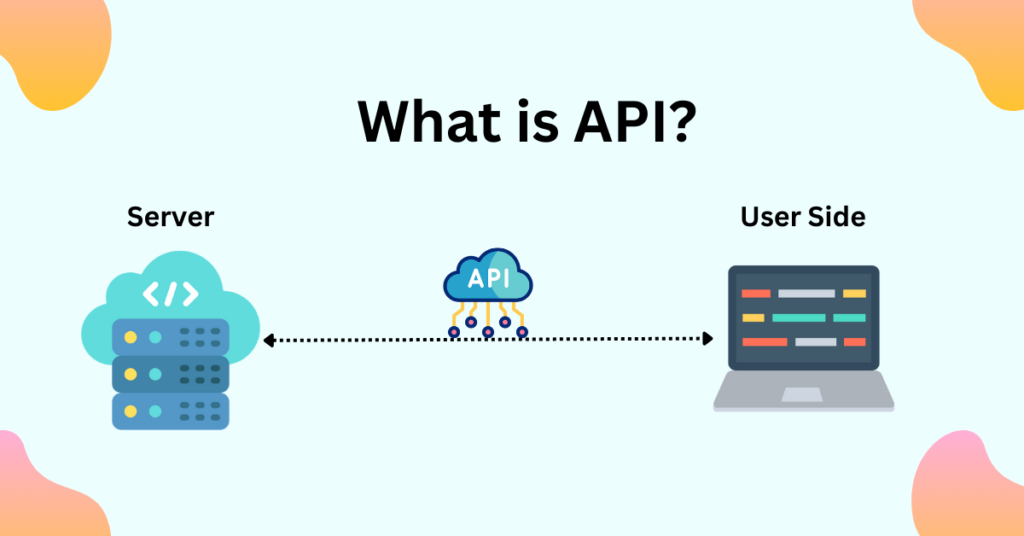In the world of technology, APIs (Application Programming Interfaces) are often considered the unsung heroes that enable communication between software applications. They play a crucial role in how different systems interact and share data. In this blog post, we’ll explore what APIs are, how they work, the different types, and provide a clear example to illustrate their importance.
What is an API?
An API, or Application Programming Interface, is a set of rules and protocols that allows different software applications to communicate with each other. Think of an API as a waiter in a restaurant. When you place an order (make a request), the waiter (API) takes your request to the kitchen (the server) and brings back your food (the response). This allows you to enjoy a meal without needing to know how to cook it yourself.
APIs facilitate interaction between different software components, enabling them to leverage each other’s functionalities and data. They are essential for creating seamless experiences in web and mobile applications, allowing developers to integrate third-party services and data into their own applications.
How Do APIs Work?
APIs work through a series of requests and responses. Here’s a simplified breakdown of how the process usually functions:
- Request: A client (such as a web application or mobile app) sends a request to the API. This request typically includes an endpoint (a specific URL), an HTTP method (GET, POST, PUT, DELETE), and any necessary parameters or data.
- Processing: The API receives the request and processes it. This may involve querying a database, interacting with other services, or executing specific operations.
- Response: After processing the request, the API sends back a response to the client. This response usually includes a status code (indicating whether the request was successful or encountered an error) and the requested data in a format such as JSON or XML.
Example of API Interaction
Let’s consider a practical example to illustrate how APIs work. Imagine you are using a weather application on your smartphone.
- User Request: You open the app and enter your location to check the weather.
- API Request: The app sends a request to a weather API (e.g., OpenWeatherMap API) with your location details. The request might look like this:
GET https://api.openweathermap.org/data/2.5/weather?q=London&appid=YOUR_API_KEY
- API Processing: The weather API processes your request, retrieves the latest weather data for London from its database, and prepares a response.
- API Response: The API sends back a response in JSON format, which may look something like this:
{
"weather": [
{
"description": "clear sky"
}],
"main": {"temp": 288.55,
"pressure": 1012,"humidity": 81
},"name": "London"
}
- Display Data: The weather app receives the response, extracts the relevant data (like temperature and weather description), and displays it to you in an easy-to-read format.
Types of APIs
APIs come in various types, each serving different purposes and use cases. Here are the main types:
- Open APIs (Public APIs): These are publicly available APIs that developers can access without restrictions. They are often used for integrating third-party services, like social media sharing or payment processing.
- Internal APIs (Private APIs): These APIs are used within an organization to facilitate communication between internal systems. They are not exposed to external developers and are designed to improve efficiency and integration within the company’s software ecosystem.
- Partner APIs: These are shared with specific business partners and often require authentication or access keys. They enable collaboration and data sharing between organizations.
- Composite APIs: These APIs allow multiple endpoints to be accessed in a single call. They are useful for reducing the number of requests made to a server and improving efficiency.
Benefits of Using APIs
APIs provide numerous advantages to developers and businesses, including:
- Efficiency: APIs allow developers to leverage existing services instead of building functionalities from scratch, saving time and resources.
- Interoperability: APIs enable different systems and applications to work together, enhancing collaboration and data sharing.
- Scalability: As businesses grow, APIs can facilitate the integration of new services and systems without significant changes to existing infrastructure.
- Innovation: By exposing their functionalities through APIs, companies can foster innovation, allowing third-party developers to create new applications and services.
Conclusion
APIs are integral to the modern digital landscape, enabling seamless communication between applications and services. Whether you’re checking the weather, making online payments, or connecting with social media, APIs are working behind the scenes to make it all happen. By understanding how APIs function and their various types, developers can harness their power to create innovative and efficient software solutions.
As technology continues to evolve, APIs will remain a vital component of software development, paving the way for new opportunities and experiences in the digital world.



